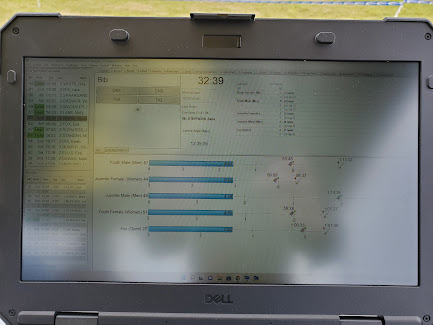Firstly a huge thankyou to Dave for helping me with timing for this event, wouldn't have been able to do it without him. So with the last post I thought I had multi-sport event timing cracked. 100% read rate at Killerton, job done, got a model to follow. I'd got a similar read rate for the Devon Duathlon previously, but that was using bib chips, this was Hu-Tags. Therefore it was with a bit of trepidation, but quiet confidence, that I headed off to the Dawlish Triathlon. I had put quite a bit of prep time into this one, testing chips and equipment, repairing two of the reader boxes, building a bespoke box for the swim and testing that, and generally going over everything. Previous experience at Dawlish was that it was high paced, stressful and if something could go wrong, it would. And so trial by Dawlish began.... As you can probably guess from the image above, the swim was cancelled. Replaced by a run. No need for the fancy timing box I'd built up with a separate network




